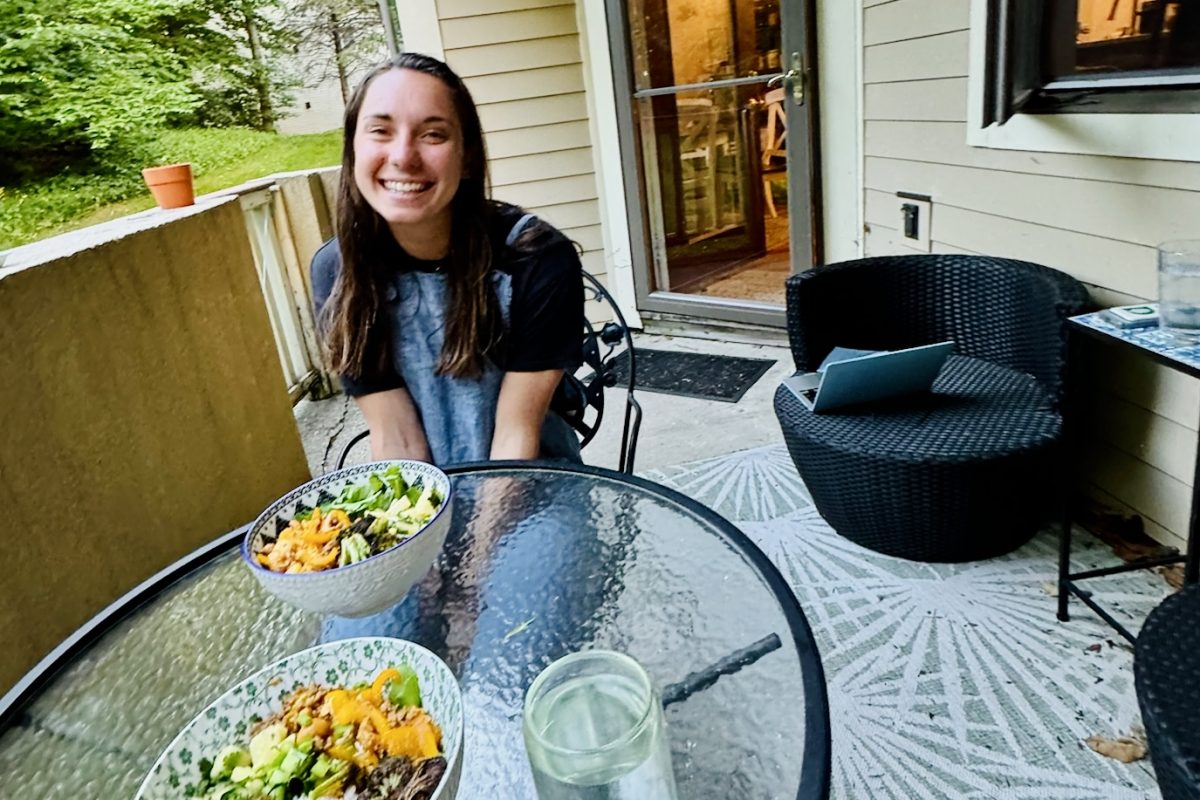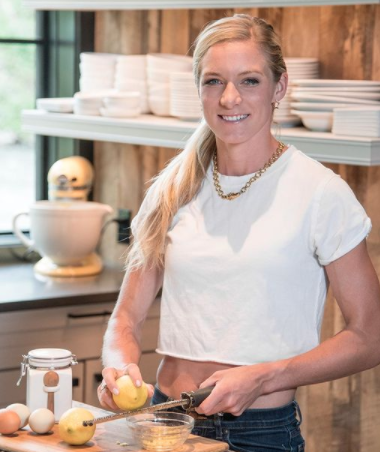
Starting with a quick disclaimer, I’ve been a fan of Emma Coburn, Olympic Bronze Medalist and World Champion steeplechaser, for most of her career. Spending this winter in her hometown of Crested Butte, Colorado has, if anything, amplified my appreciation for her as both an athlete and role model for other female runners. As such, I was very excited this fall when she announced the release of her cookbook, “The Runner’s Kitchen”, and immediately pre-ordered.
I’m pleased to say the purchase did not disappoint.
For starters, the food philosophy Coburn promotes is a breath of fresh air. Contrasting the fad diets often promoted as a panacea in mainstream media — Paleo, keto, vegan, gluten-free — she promotes an “everything in moderation” approach. Her recipes emphasize creating balanced meals that help athletes get the nutrients they need without cutting out foods that simply bring joy and taste delicious.
Through my time in sport, I’ve seen the prevalence of disordered eating in endurance sport from coach, teammate, and personal perspectives. My history involves a tenuous-at-best relationship with food body image, which I’ve recognized in countless others, male and female. I love the message that butter, all-purpose flour, and bacon are part of an Olympian’s diet even during peak competition season. Yes, fruits, vegetables, and whole grains are important (and prevalent in the recipes), but Coburn eschews the idea that restriction is a necessary element of a healthy diet. It’s a message that athletes of all ages can benefit from.
“Fueling for performance doesn’t mean that you have to eat only ‘clean’ foods and cut out all of the foods you enjoy,” writes Coburn. “It means finding a balance that allows you to provide your body with the fuel it needs to perform and recover while still enjoying the foods you love.”
In the introduction, Coburn breaks down how her nutrition strategy changes during the different phases of a training cycle: off-season, mileage increase, and peak season. She guides readers to recipes that can help them similarly tailor their nutrition to meet the demands of their training.
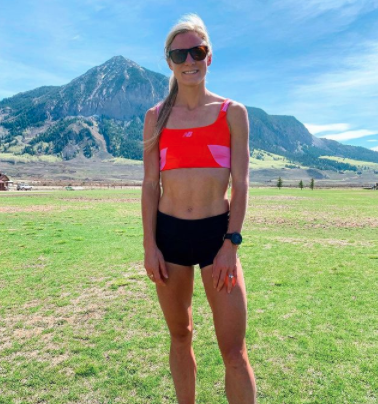
As her volume and intensity builds from January through April, she notes, “During this phase, I increase my carbs, I am diligent about eating enough protein, and when in doubt, I try to over-fuel a bit. I would rather be eating too much and feeling strong and healthy than be restrictive and risk any injury or illness.”
While you’ll find recipes for roasted beets, cauliflower-based vegan “mac and cheese”, and kale salad, The Runner’s Kitchen also has recipes for french toast with a brown sugar crumb topping, a baked “fried chicken” sandwich with bacon, and a from-scratch chocolate cake with vanilla buttercream. I most appreciated that the ingredient lists were easy to find –most were already in my pantry– and the recipes were both creative and user friendly.
Despite being packed with flavor and inspired by a variety of cuisine, few recipes require too much chopping or time in the kitchen — a plus for those of us squeezing in skiing around work and/or family.
So far, all of the recipes we’ve tried from The Runner’s Kitchen have been remarkably tasty, despite our relatively mediocre cooking skills. As we’ve been trying to avoid frequent trips to the grocery store since last March, it also helped my family break out of a rut from cooking the same meals on repeat.
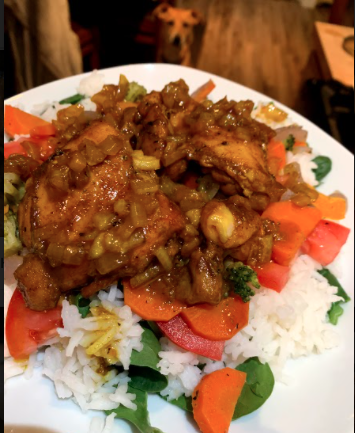
The first recipe that caught my attention was maple turmeric chicken thighs, marinated and cooked in a flavorful sauce that has just the right amount of sweetness. Placed atop some rice and veggies, this recipe is unbelievably good. It is by far our most repeated recipe — we’ve made it five times in the two months since receiving the book. Yum.
Topped with marinated and grilled pineapple (or broiled/pan-seared when your grill is buried in snow), the teriyaki turkey burgers check all the boxes: sweet, savory, spicy, and satisfying. We also love the buffalo chicken meatballs — even my husband, who previously was opposed to ground poultry as he didn’t think it could quell his voracious appetite.
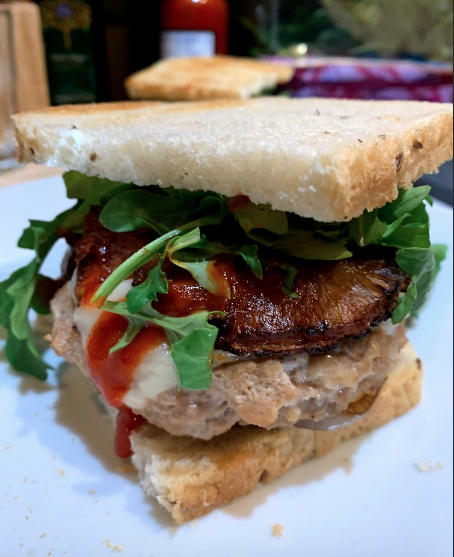
Both the beet and arugula cashew pesto recipes offer a quick and refreshing alternative to our pasta routines, while also being packed with nutrient-rich ingredients.
On long ski days, I’ve taken to making the golden milk latte (with coconut milk because I don’t mix well with dairy) as a satisfying way to get in extra calories with the bonus of anti-inflammatory from the turmeric. The aforementioned chocolate cake doesn’t hurt with offsetting calorie deficits either.

My “make soon” list includes brunch options, like veggie or chicken apple sausage frittatas, the dutch baby pancake, and shakshouka. When warm weather returns and I begin to crave crunchy and refreshing salads, I have a feeling that the Asian chicken salad will become a mainstay. I’m also eyeing the bibimbap, butternut squash gnocchi, and Pad Thai egg rolls for when I’ve got a little more meal-prep time on my hands.
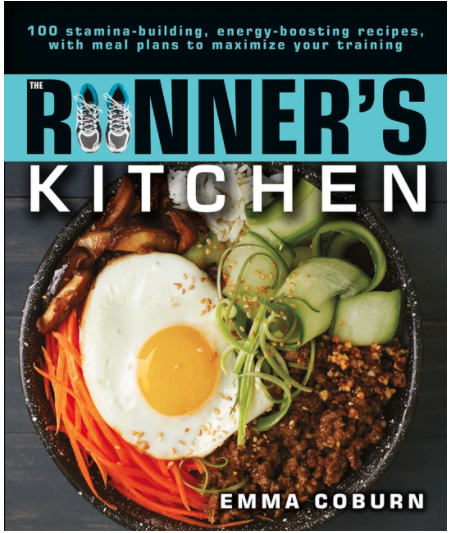
If I’ve sold you on Coburn’s message and piqued your interest in these flavorful recipes, you can snag an autographed copy of The Runner’s Kitchen on her website, emmacoburn.com, or order a non-autographed copy on Amazon for $19.99.
Rachel Perkins
Rachel is an endurance sport enthusiast based in the Roaring Fork Valley of Colorado. You can find her cruising around on skinny skis, running in the mountains with her pup, or chasing her toddler (born Oct. 2018). Instagram: @bachrunner4646



